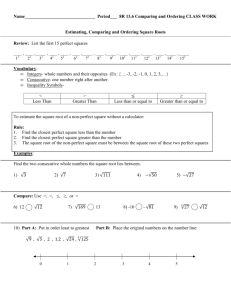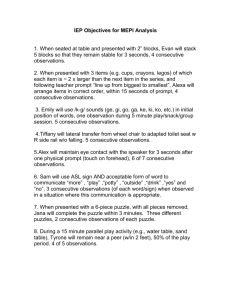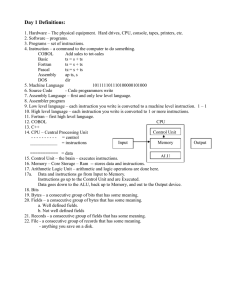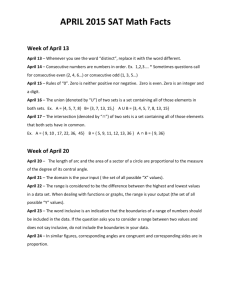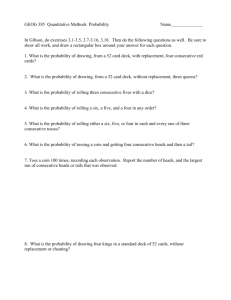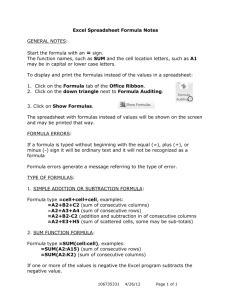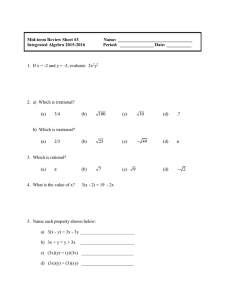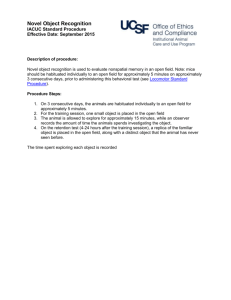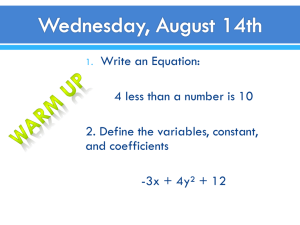Making Numbers by Adding Consecutive Numbers
advertisement
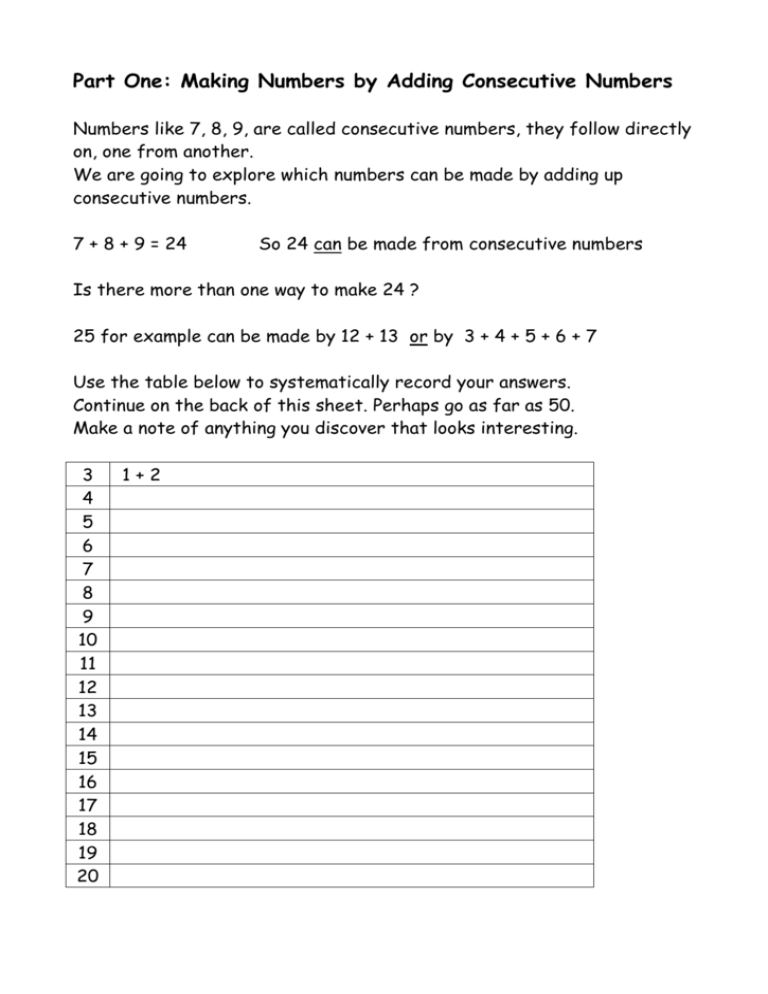
Part One: Making Numbers by Adding Consecutive Numbers Numbers like 7, 8, 9, are called consecutive numbers, they follow directly on, one from another. We are going to explore which numbers can be made by adding up consecutive numbers. 7 + 8 + 9 = 24 So 24 can be made from consecutive numbers Is there more than one way to make 24 ? 25 for example can be made by 12 + 13 or by 3 + 4 + 5 + 6 + 7 Use the table below to systematically record your answers. Continue on the back of this sheet. Perhaps go as far as 50. Make a note of anything you discover that looks interesting. 3 4 5 6 7 8 9 10 11 12 13 14 15 16 17 18 19 20 1+2 Part Two: Adding Consecutive Numbers First the long way. Add up 1 + 2 + 3 + 4 + 5 = Now see the pattern another way: The sequence is written a second time in reverse order. 1 +2+3+4+5 5+4+3+2+1 Notice that each number in the lower line makes a sum of 6 with the number directly above it. Can you see why all these individual pairs must have the same total ? In all there are 5 of these pairs, all of which make 6, so the total of all the numbers in both lines must be 5 lots of 6, that's 30. Both lines have the same total so they must be 15 each. ( 30 between 2 ) And we have discovered that the numbers 1 to 5 have a sum of 15. What about the sum of the numbers 1 to 10 ? Write them down in line and again in a second line but backwards. What will each number in the lower line make with the number directly above it this time ? How many pairs will there be ? So what is the total of all the numbers together in both lines ? And then you'll know the total in each line. You have found the answer to 1 + 2 + . . . . + 10 But without having to add them all ! Try 1 to 20 using this trick. 1 to 50 ? to 100 ? or 1000 ? Could you write a formula explaining how to do 1 to n ? Can you see how to use this trick to add 10 + 11 + . . . . . + 20 ?


